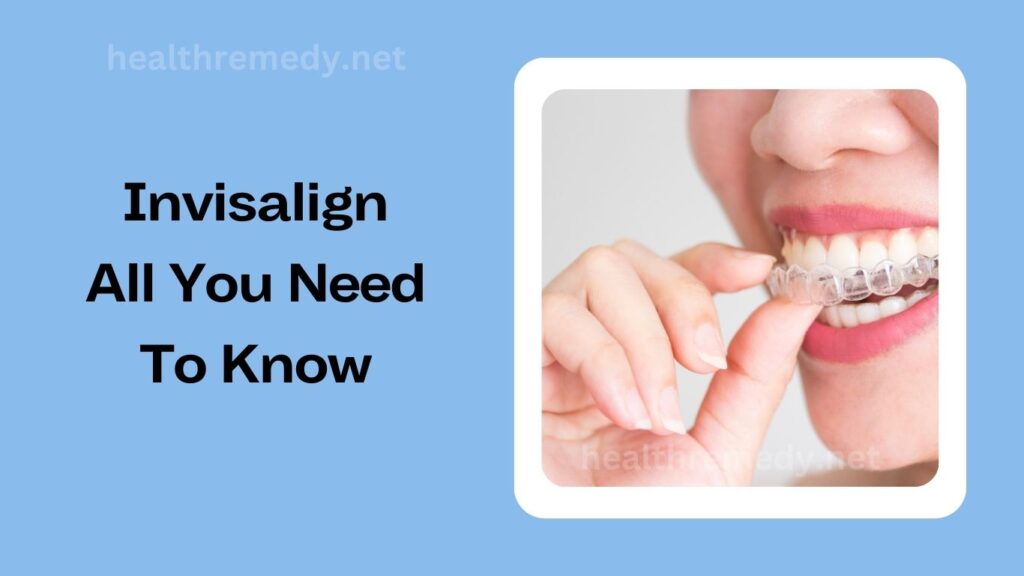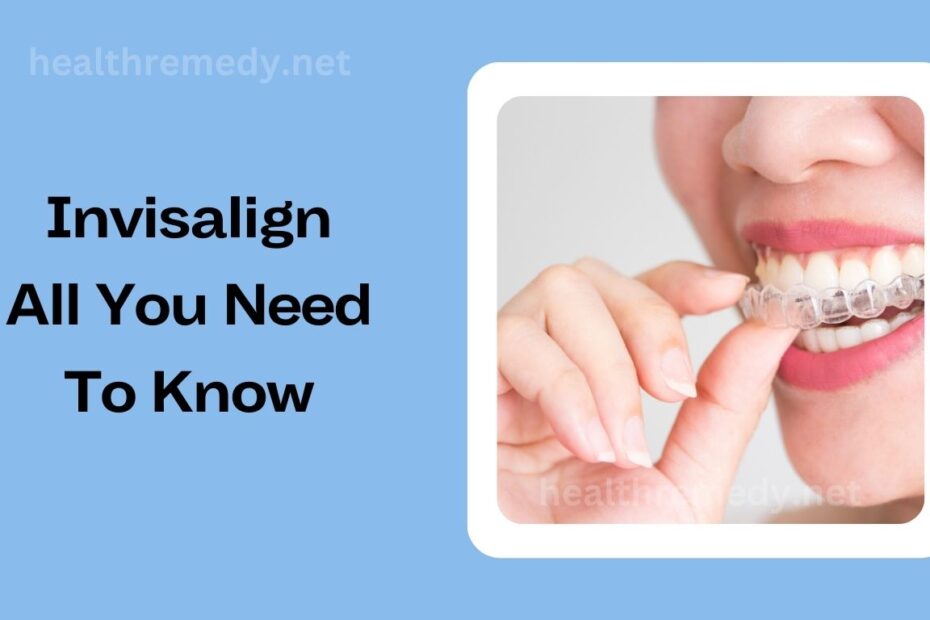What is Invisalign?
Invisalign is a cutting-edge dental treatment that uses clear, removable aligners to straighten teeth. Unlike traditional braces that use metal wires and brackets, Invisalign offers a virtually invisible and comfortable alternative. Invisalign’s patented SmartTrack material allows for a snug fit over your teeth, leading to effective and efficient teeth straightening.

The History of Invisalign
Invisalign was introduced to the dental world in 1999 by Align Technology. The company’s founders, Zia Chishti and Kelsey Wirth, revolutionized orthodontic treatment by using 3D computer imaging technology to design and manufacture customized aligners. Today, Invisalign is a popular choice for orthodontic patients worldwide, with over 9 million smiles transformed.
How Does Invisalign Work?
Invisalign works by gradually moving your teeth into their correct positions. After an initial consultation, your dentist or orthodontist will develop a personalized treatment plan. You’ll receive a series of custom-made aligners, which you’ll wear for about 20-22 hours a day, removing them only for eating, brushing, and flossing. Every one to two weeks, you’ll switch to a new set of aligners, each set designed to make slight adjustments to the tooth position.
The Advantages of Invisalign
Comfort and Convenience
One of the most significant advantages of Invisalign is its comfort and convenience. The aligners are custom-made to fit your teeth snugly. There are no wires or brackets to irritate your mouth, and you can remove the aligners when eating or cleaning your teeth. This flexibility makes Invisalign a convenient option for many people, especially adults and teenagers.
Invisible Appearance
Invisalign aligners are virtually invisible, making them a popular choice for those who are conscious about their appearance. They provide a discreet way to straighten your teeth without the noticeable metal braces. This can be particularly beneficial for adults who have professional jobs or teenagers who feel self-conscious about wearing braces.
Better Oral Health
Invisalign aligners are removable, which makes maintaining good oral hygiene much easier than with traditional braces. You can brush and floss your teeth as usual, reducing the risk of potential issues such as tooth decay and gum disease. For more information about maintaining oral health, check out our article on oral hygiene.
Invisalign vs Traditional Braces
Comparison of Treatment Time
On average, the Invisalign treatment process can take anywhere from 12 to 18 months, although it varies depending on the complexity of the case. Traditional braces, in contrast, usually need to be worn for around two years. It’s important to note that while Invisalign aligners should be worn for most of the day, they can be removed for short periods, something not possible with traditional braces.
Comparison of Appearance
When it comes to appearance, Invisalign is a clear winner. The transparent aligners are almost invisible, allowing you to smile without feeling self-conscious. Traditional braces, with their metal brackets and wires, are far more noticeable.
Comparison of Comfort
Many people find Invisalign more comfortable than traditional braces. The metal wires and brackets of traditional braces can irritate the inside of the mouth and cause discomfort. In contrast, Invisalign aligners are made of smooth plastic and are custom-fitted to your teeth, reducing the potential for discomfort.
The Invisalign Treatment Process
Initial Consultation
Your journey to a better smile with Invisalign begins with an initial consultation. During this appointment, your dentist or orthodontist will assess your teeth and discuss your goals for treatment. They may take X-rays, photographs, and impressions of your teeth, which will be used to create a 3D digital model. This model helps in planning the exact movements of your teeth throughout the treatment process.
Treatment Plan
Based on your initial consultation, your dentist will create a personalized treatment plan. This plan outlines the step by step transformation of your smile, from the initial position of your teeth to the final desired outcome. You’ll be able to see a virtual representation of how your teeth will move during treatment, giving you a glimpse of your future smile.
Wearing the Aligners
Once your custom-made aligners are ready, you’ll start wearing them for about 20-22 hours per day. You should remove them only for eating, drinking anything other than water, and brushing your teeth. Approximately every 1-2 weeks, you’ll begin wearing a new set of aligners, gradually moving your teeth into their desired positions. Regular check-ups with your dentist or orthodontist will ensure that your treatment is progressing as planned.

Caring for Your Invisalign Aligners
Cleaning Your Aligners
Proper care and cleaning of your Invisalign aligners are crucial to maintaining their clarity and effectiveness. You should clean your aligners every time you brush your teeth. Use a toothbrush with soft bristles and a non-abrasive toothpaste to gently brush the aligners. Rinse them under lukewarm water—never hot, as it can warp the plastic. There are also cleaning solutions specifically designed for Invisalign aligners. Avoid using colored or scented soaps, as they can leave a residue and cause discoloration or an unpleasant taste.
What to Avoid With Your Aligners
While wearing your Invisalign aligners, it’s important to avoid certain things that can damage them. Don’t eat or drink anything (except water) while wearing your aligners. Many foods and drinks can stain the aligners or cause them to smell bad. Smoking is also not recommended, as it can cause discoloration. For more information on how to care for your dental health, refer to our articles on tooth decay and oral hygiene.
Replacing Your Aligners
You’ll be switching to a new set of aligners every one to two weeks. Each new set might feel a little tight or uncomfortable at first, but this discomfort is a good sign that your aligners are working. If you lose or damage an aligner, contact your dentist or orthodontist immediately to avoid any delays in your treatment.
Who is Suitable for Invisalign?
Age Considerations
Invisalign treatment is suitable for both teens and adults. For children and younger teens whose teeth are still growing and developing, traditional braces or other orthodontic options may be more appropriate. It’s crucial to consult with a dental professional to understand the best course of treatment for patients of different ages.
Dental Health Considerations
Invisalign can correct a wide range of dental issues, from minor tooth movements to more complex cases such as overbites, underbites, and overcrowding. However, for extremely complex cases, traditional braces or surgical orthodontics may be more effective. A consultation with a dentist or orthodontist will help determine whether Invisalign is the right treatment for your specific dental condition.
Lifestyle Considerations
The removable nature of Invisalign aligners offers great flexibility, making them suitable for those with active lifestyles or occupations that require a lot of speaking or public appearances. However, it’s important to remember that the success of Invisalign treatment requires discipline. Aligners need to be worn for 20-22 hours a day, so patients must be committed to wearing them consistently.
Cost of Invisalign Treatment
Factors Affecting Cost
The cost of Invisalign treatment varies depending on factors such as the complexity of the case, the length of the treatment, and the specific provider. In general, Invisalign treatment is comparable in cost to traditional braces. For a more detailed understanding of the cost, it’s recommended to consult with an Invisalign provider.
Insurance and Financing Options
Many dental insurance plans cover Invisalign treatment just as they would other orthodontic treatments. Additionally, there are various financing options available, such as monthly payment plans, to make the treatment more affordable. Check out this guide on choosing the best dental insurance for more information.
Cost Comparison: Invisalign vs Braces
While the cost of Invisalign is generally comparable to that of traditional braces, there are other factors to consider. Invisalign offers several advantages that may offset the cost difference, including comfort, convenience, and the ability to maintain better oral hygiene during treatment.
Managing Discomfort with Invisalign
Initial Adjustment Period
Like all orthodontic treatments, there may be some discomfort or feeling of pressure for a few days when you start wearing a new set of Invisalign aligners. This is normal and is a sign that the aligners are moving your teeth to their desired positions. Over-the-counter pain relievers can help manage this initial discomfort.
Tips for Minimizing Discomfort
Changing to a new set of aligners before bedtime can help manage discomfort, as the movement will happen while you sleep. Using a cold compress on the outside of your mouth can also help. Regular check-ups with your dentist or orthodontist will ensure that your treatment is progressing smoothly and allow them to address any discomfort or concerns you may have.
Using Invisalign Attachments and Chewies
In some cases, Invisalign treatment may require the use of attachments, which are small tooth-colored buttons that help the aligners grip your teeth more effectively. These attachments can cause some initial discomfort but should become less noticeable over time. Invisalign Chewies, small foam cylinders, can also be used to help seat the aligners more securely on your teeth, reducing discomfort and ensuring the aligners are working effectively.
Post-Invisalign Treatment Care
Wearing Retainers
After completing your Invisalign treatment, it’s important to wear retainers to maintain your new smile. Your dentist or orthodontist will provide you with custom-made retainers to wear full-time for the first few months, gradually reducing the time until you only need to wear them at night. Wearing retainers will ensure your teeth do not shift back to their original positions and will keep your smile looking its best.
Dental Checkups and Maintenance
Continuing with regular dental checkups and maintaining good oral hygiene is essential after completing Invisalign treatment. Your dentist will monitor your teeth and ensure that they remain in their proper positions. Regular cleanings and exams will also help maintain your overall oral health. For more information on maintaining oral health, read our article on the benefits of dental checkups.
Final Thoughts on Invisalign
Invisalign is a modern, discreet, and effective solution for straightening teeth without the inconvenience and discomfort of traditional braces. It offers numerous advantages, including a nearly invisible appearance, removable aligners for better oral hygiene, and a generally shorter treatment time compared to braces. Consult with a dental professional to determine if Invisalign is the right choice for your unique dental needs.
